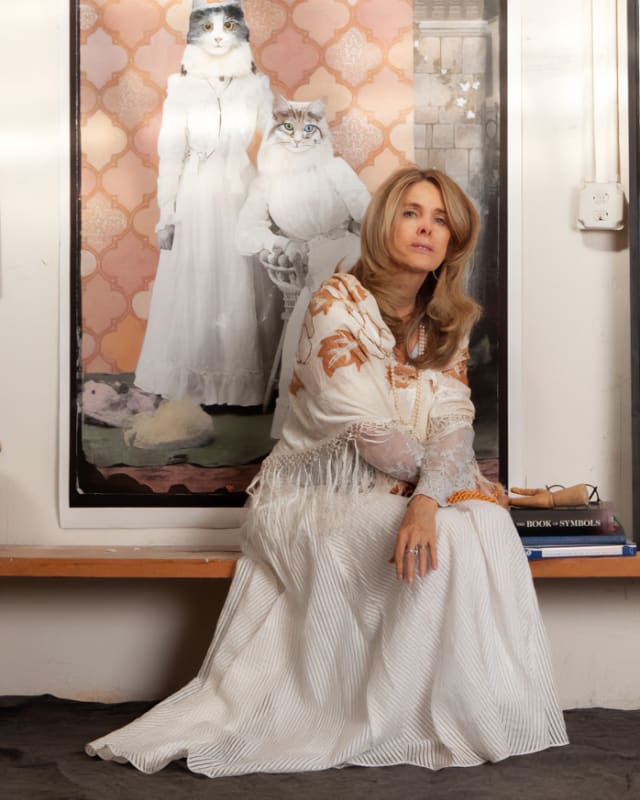Through an ethereal realism, Alexandra Eldridge explores the great themes of life: consciousness and unconsciousness; fear and love; memory and dreams.
Well-known for working with unconventional materials such as vintage photographs, venetian plaster, antique scrolls and other fragments and ephemera - within a present body of work, turn of the century plate glass negatives are a stage for her to interweave meaning.
Liberation is unleashed onto austere imagery from a bygone time, by being laced with a recipe of spirituality, poetry, mythology and mysticism.
With zoomorphic tropes, her paintings resolve as journeys of exploration into the innate connection between animal and human. The gaze of our ancestors is merged with the dignified and mindful gaze of majestic animals, releasing a theatre of seduction and infinite fantasy. Though further still, there resides an unsettling duality reminding us of the transience and fragility of our own life and dreams.
In a process of mapping and layered meaning, Eldridge makes reference to myriad literary and philosophical sources, including Jungian psycho analytics; the Prophecy of Merlin; the writings of the Spanish Counter Reformation mystic, St. John of the Cross; as well as the poetry of William Blake, Emily Dickinson, T.S. Elliot, Rainer Maria Rilke, and the Thirteenth-Century Persian poet, Rumi. Eldridge uses these literary influences as a starting point to consider the primacy of emotion and the power of the imagination in establishing a heightened state of being.
Eldridge studied at Ohio University, Cambridge University and Santa Reparata Graphic Workshop in Florence. In the early 1970s Eldridge co-founded Golgonooza, an artist's community in Athens, Ohio, based upon the philosophies of the visionary British artist and poet, William Blake (1757-1827). Blake’s influence is evident throughout Eldridge’s work, particularly in her vocabulary of mysterious visual metaphors: a constellation of personal symbols often drawn from dreams, which includes feet, dresses, ladders, houses, swings, hourglasses, eggs, birds, rabbits and deer. Oscillating between the seen and the unseen, the personal and the universal, Eldridge’s poetic and tender images celebrate contradiction, paradox and the abandonment of reason, existing in a place which the artist Adam Fuss has described as located “on the periphery of knowledge.”
Alexandra Eldridge has had over 40 solo exhibitions across the USA and in Paris, and has been included in numerous group shows internationally, including London, Paris, New York, Belgrade, Ljubljana, California, Santa Fe and a major mural commission for the Place de Vosges, Paris. She has participated in residencies on the Island of Elba, Italy, and the Valparaiso Foundation in Almeria, Spain. Her work is included in the private collections of William Hurt, Steve Buscemi and Edie Falco.
Eldridge currently lives and works in New Mexico.
